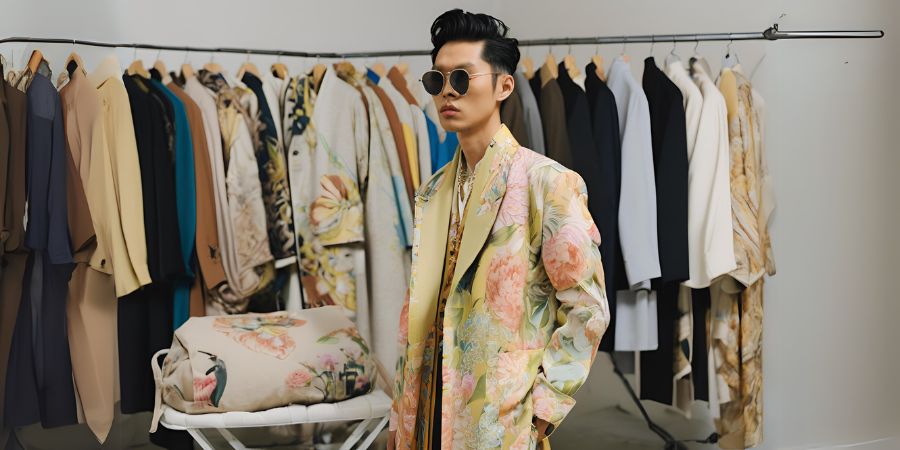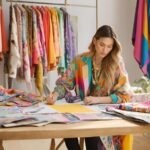Being a fashion designer is both an art and a craft that combines creativity, technical skills, and business savvy. It’s a career that invites you into a dynamic industry full of opportunities to express your artistic vision while staying attuned to ever-evolving trends. Let’s dive into the life of a fashion designer to understand the responsibilities, challenges, and rewards of this captivating profession.
The Journey of a Fashion Designer
The Art of Fashion Design
At its core, fashion design is about creating clothing and accessories that are both functional and aesthetically pleasing. A designer begins with an idea or inspiration, often derived from culture, nature, art, or personal experiences. This vision is translated into sketches, patterns, and ultimately, finished garments. The ability to bring abstract ideas to life is what makes this career deeply fulfilling.
Education and Training
Most fashion designers start their journey with formal education. A degree in fashion design, textiles, or a related field equips aspiring designers with the skills they need to succeed. These programs typically cover:
- Design Fundamentals: Drawing, color theory, and textile science.
- Technical Skills: Pattern making, sewing, and garment construction.
- Industry Knowledge: Fashion history, marketing, and merchandising.
While a formal degree is valuable, some designers succeed through apprenticeships or self-teaching, especially when they possess a strong portfolio and a unique sense of style.
A Day in the Life of a Fashion Designer
1. Brainstorming and Sketching
The creative process begins with brainstorming ideas, often inspired by current trends, consumer needs, or a seasonal theme. Designers sketch their concepts, sometimes by hand or using digital tools like Adobe Illustrator or CAD software.
2. Material Selection
Fabric choice is crucial in fashion design. A designer must consider factors like texture, drape, durability, and sustainability. Visiting fabric markets or collaborating with textile manufacturers is a regular part of the job.
3. Creating Prototypes
Once a design is finalized, a prototype or sample garment is created. This involves pattern-making and sewing, which may be done by the designer or a team of skilled technicians. Prototypes are essential for visualizing the final product and making adjustments.
4. Collaborating with Teams
Fashion design is rarely a solo endeavor. Designers work closely with pattern makers, seamstresses, and marketing teams to ensure their vision is executed perfectly. In larger companies, they may also collaborate with trend forecasters and product developers.
The Glamour vs. Reality
1. Glamorous Aspects
Being a fashion designer offers many perks, such as:
- Creative Expression: The freedom to experiment with colors, patterns, and silhouettes.
- Recognition: The chance to showcase collections on runways and gain acclaim.
- Travel Opportunities: Attending international fashion weeks and sourcing materials globally.
2. The Challenges
Behind the glitz lies a demanding profession. Designers often face:
- Tight Deadlines: Fashion cycles are relentless, requiring quick turnarounds.
- Competition: Standing out in a saturated market is a constant challenge.
- Financial Risks: Launching a brand or collection involves significant investment with no guarantee of success.
Skills Every Fashion Designer Needs
1. Creativity and Innovation
Fashion is about setting trends, not just following them. Designers must think outside the box to create unique and memorable collections.
2. Attention to Detail
From the stitch on a hem to the placement of a zipper, every detail matters. Precision ensures the garment is both functional and beautiful.
3. Business Acumen
Understanding the business side of fashion is essential for success. This includes pricing, budgeting, and marketing strategies.
4. Communication and Collaboration
Designers must effectively communicate their vision to team members, clients, and manufacturers. Strong interpersonal skills are invaluable in this collaborative field.
Specializations in Fashion Design
Fashion design is a diverse field with several areas of specialization:
1. Ready-to-Wear
Designers in this category create garments for mass production, balancing creativity with marketability.
2. Haute Couture
This elite sector involves creating custom, one-of-a-kind pieces for high-profile clients. Haute couture demands exceptional craftsmanship and attention to detail.
3. Accessories Design
From handbags to jewelry, accessories designers focus on creating complementary pieces that enhance an outfit.
4. Sustainable Fashion
With growing environmental concerns, many designers are focusing on eco-friendly practices, using sustainable materials and ethical production methods.
The Rewards of Being a Fashion Designer
Despite its challenges, a career in fashion design offers immense satisfaction. Designers have the power to influence trends, make bold statements, and bring joy to people through their creations. Whether it’s seeing your work on a runway or receiving praise from a satisfied customer, the sense of accomplishment is unparalleled.
Tips for Aspiring Fashion Designers
- Build a Strong Portfolio: Your portfolio is your calling card. Showcase your best work to demonstrate your skills and unique style.
- Stay Updated on Trends: Follow fashion magazines, blogs, and influencers to stay ahead of the curve.
- Network: Attend industry events and connect with professionals to open doors for collaborations and job opportunities.
- Gain Experience: Internships and freelance projects provide valuable hands-on experience.
- Be Persistent: Success in fashion design takes time, effort, and resilience.
FAQs
Conclusion
Being a fashion designer is a journey filled with creativity, challenges, and opportunities. It’s a profession that demands hard work, dedication, and a passion for innovation. For those who dream of leaving their mark on the fashion world, it offers a rewarding platform to transform ideas into reality. Whether you envision yourself creating couture masterpieces or eco-friendly collections, the world of fashion design awaits your unique contribution.
By embracing your passion and honing your skills, you can carve out a fulfilling career in this exciting industry.


